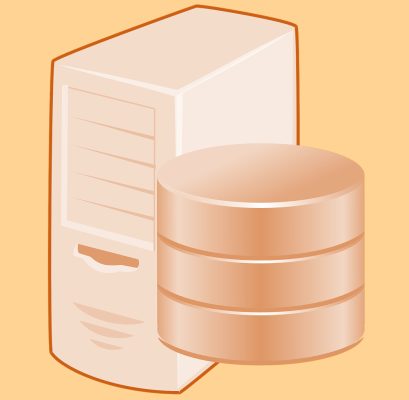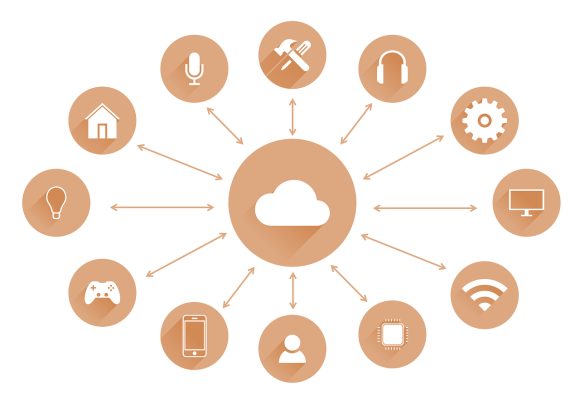You’ve probably heard of “smart homes” or “smart security systems,” and you very likely own a smartphone. What you may not know is that all of those devices are strongly connected to the concept of the Internet of Things (IoT).
IoT is a network of digital devices that connect to each other and to the internet. So if you use your smartphone to dim your outdoor lights at night, or you use a security monitoring app to remotely keep track of unusual activity in your home while you’re away, you’re using IoT.
The market for IoT reached nearly $5 billion in 2021, and experts believe it will only continue to grow. IoT has an extensive list of benefits for businesses, so it’s no wonder that more than 90% of executives think IoT is worthwhile and want to build a comprehensive IoT ecosystem.
An IoT ecosystem example would be a healthcare network that uses internet-connected devices to monitor blood pressure or blood sugar in patients and analyzes that information to make health recommendations. Another example is an industrial IoT ecosystem, which might use smart devices to check fluid levels in machinery and increase or decrease those levels where necessary for machines to function properly.
How can you work to create an IoT ecosystem in your company? And what are the components of such an ecosystem?
Understanding the IoT Ecosystem
Just as the earth’s ecosystem has different layers, there are different layers within an IoT ecosystem. For starters, you need a layer that lets IoT devices gather data and act on it. Then you need a way to transfer that data over the internet. Generally, companies also want to use the data for analytics, so you need a way to present the data in a way that is helpful to the user.
1. IoT Devices
Devices like your smart outdoor lights or a temperature monitoring system for an agricultural project are the first layer of the ecosystem. IoT devices need to have two things embedded in them: sensors and actuators.
Sensors monitor certain aspects of their surroundings. For example, a light sensor can tell when it’s dark out. A proximity sensor can tell when someone is close by. Other sensors can help make sure there are no dangerous chemicals in the air in a laboratory.
Actuators use the data from the sensors to perform an action. So, if a light sensor shows it’s dark out, the actuator can turn on the lights. If a proximity sensor says an unauthorized person is close by, an actuator can trigger an alarm.
2. Connectivity Elements
Connectivity for IoT has both a hardware element and a software element. The hardware element is called the “gateway,” and it allows your device to connect to the cloud and to other smart devices. An example would be a home modem, which provides internet access, and a router, which connects your devices to each other.
There are some types of software that can also act as gateways, but the place where software primarily comes in is with internet protocols for data transfer. These protocols let you connect to the internet to take the data that the sensors collect and transport it to its destination. Wi-Fi is just one of the protocols that allows devices to connect to the internet. There are other protocols as well, such as Lan, RF and Li-Fi.
3. Data Analytics
Data analytics, meaning processing data to make it useful, often relies on cloud databases. Cloud databases can be expensive, but they give you opportunities for predictive analytics that you might not otherwise have.
For example, sensors that collect weather data don’t just give you today’s weather report. Most weather apps give you tomorrow’s weather, as closely as the system can predict it. The way these systems predict weather as far ahead as a week is by gathering data from various sensors, sending it to the cloud through a gateway and internet protocol, and then analyzing it in the cloud. The system will guess what the weather will look like in the future based on various computer models. Cloud databases are perfect for such deep predictive analysis that isn’t particularly time-sensitive.
On the other hand, a P2P (Peer-to-Peer) platform is better suited for simple, fast analysis. P2P negates the need for a central database or server by sending data directly from the sensors to the actuator or to the user. Avoiding the server/data storage step reduces latency, so a P2P Application Enablement Platform (AEP), like the one that Nabto provides, is perfect for any situations where you need an instant response from an actuator.
Smart traffic lights are one example of a system that requires an immediate response. Smart traffic lights can help to prioritize safe routes for emergency vehicles. The lights will need to respond instantly to the data about current emergencies, as well as keep constant track of traffic on the roads. So latency here could cost lives. This kind of time-sensitive data transfer is where you especially need P2P.
When analyzing data in an IoT ecosystem, one of the top concerns is data security. Security has become an even more important concern since there were over 1.5 billion IoT breaches in the first six months of 2021 due to cyberattacks. Relying on a cloud database means you need to consider security for data as it’s coming into the database, as the data is being analyzed, and during transfer from the database to the final destination. P2P bypasses the intermediary by transferring data directly to the destination, so security is easier to manage.
4. End-User Interfaces
The final component in an IoT ecosystem architecture is the end-user interface. You use interfaces to see a summary of specific data collected by sensors and to interact with your IoT devices.
An example of an interface that presents data would be an internet-enabled exercise app on your phone. The app might collect data regarding the number of steps you took during the day, using sensors in your phone. Then the app could send data through the network to perform low-level analysis and compare your steps today with the number of steps you took on another day. Or, if your friends use the same app, you might be able to compare your steps with theirs. When you see that comparison pop up in your app, you’ve reached the final IoT ecosystem layer.
Another example would be an IoT system that allows you to monitor air quality in an industrial building. An air quality sensor in an IoT device could measure levels of different air pollutants. That data could be sent to an analysis platform to determine if the levels are dangerous. If they are, the system could send alerts to an app on your employees’ phones, which then become the end-user interface for presenting the data.
As an example of an interface that lets you interact with IoT devices, if you have a “smart home,” then you’ll be able to control many of your appliances with an app on your phone or your computer. Or if your office building has a smart lighting system, you could potentially interact with and control lighting in different zones of the building from an app on your computer.
Creating an Efficient IoT Ecosystem
Secure and efficient IoT ecosystems are the dream of many companies. These systems are within reach when you plan ahead for how to optimize the four layers of an IoT ecosystem through high-quality hardware and software, direct P2P connectivity, and robust data-security measures.
Failing to consider optimization at the start means you could end up having to do a costly revamp of your established ecosystem. It’s better to streamline the development of your IoT ecosystem from the beginning. Take a look at Nabto’s P2P IoT platform to find out more about how to do just that.
Read Our Other Resources
We have tons of IoT resources to help you with your IoT projects:
- Low Latency In IoT – Why Is It Important? (And How to Achieve It), which can help you decrease the time it takes for data to make it through the IoT ecosystem.
- Why IoT & the Cloud Aren’t Always a Perfect Match will give you reasons why the cloud isn’t always the best way to manage IoT data.
- Decrease your chances of a breach by learning How to Overcome IoT Security & Privacy Challenges.
- P2P IoT vs. Database-driven IoT – which one to choose? will expand more on the differences between databases and P2P.







